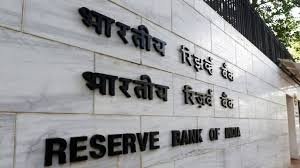
According to RBI data, India’s external debt stood at USD 558.5 billion in March, an increase of USD 15.4 billion compared to the year-ago period. The Commercial borrowings remained the largest component of the external debt, with a share of 39.4 per cent, followed by non-resident deposits at 23.4 per cent and short-term trade credit at 18.2 per cent.
Daily Current Affairs Quiz 2020
Key-Points
At end-March 2020, India’s external debt was placed at US$ 558.5 billion, recording an increase of US$ 15.4 billion over its level at end-March 2019.
Commercial borrowings remained the largest component of external debt, with a share of 39.4 %, followed by non-resident deposits (23.4 %) and short-term trade credit (18.2 %).
At end-March 2020, long-term debt (with original maturity of above one year) was placed at US$ 451.7 billion, recording an increase of US$ 17.0 billion over its level at end-March 2019.
The share of short-term debt (with original maturity of up to one year) in total external debt declined to 19.1 % at end-March 2020 from 20.0 % at end-March 2019.
US dollar denominated debt continued to be the largest component of India’s external debt, with a share of 53.7 % at end-March 2020, followed by the Indian rupee (31.9 %), yen (5.6 %), SDR (4.5 %) and the euro (3.5 %).
The borrower-wise classification shows that the outstanding debt of general government decreased, while that of non-government sector increased at end-March 2020.
The share of outstanding debt of nonfinancial corporations in total external debt was the highest at 42.0 %, followed by deposit-taking corporations (except the central bank) (28.3 %), general government (18.1 %) and other financial corporations (7.5 %).
The instrument-wise classification shows that the loans were the largest component of external debt, with a share of 34.8 %, followed by currency and deposits (24.0 %), trade credit and advances (18.7 %) and debt securities (17.4 %).
Debt service (principal repayments plus interest payments) increased marginally to 6.5 % of current receipts at end-March 2020 as compared with 6.4 % at end-March 2019, reflecting higher interest payments on commercial borrowings and lower current receipts.





